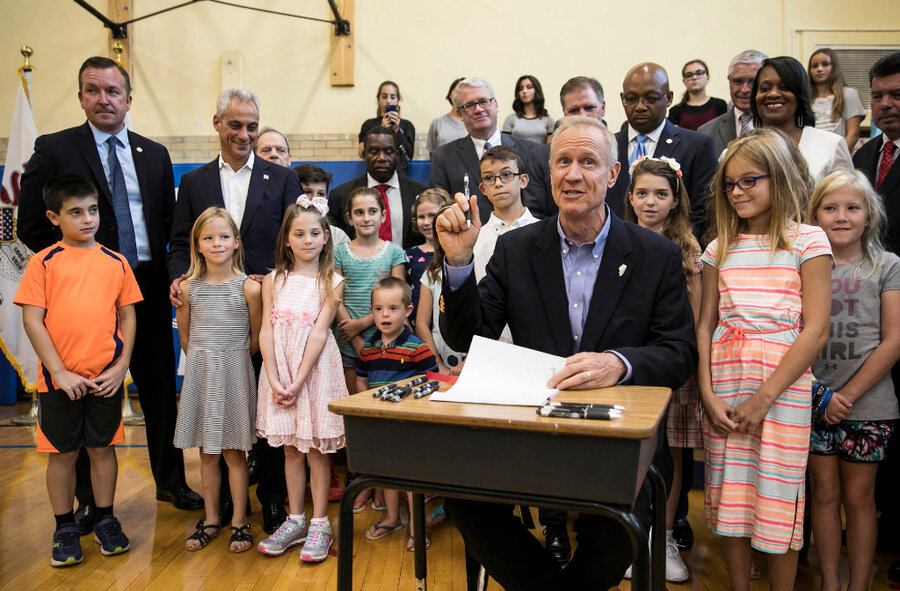What drives K-12 school reform?
Loading...
One of America’s favorite pastimes is trying to reinvent its publicly funded schools. This is because reformers, including government, are often pragmatic and humble enough to admit when their ideas or their top-down approach have failed. With the United States intensely focused on fixing K-12 schools since the 1980s, the mea culpas keep rolling in.
The latest comes from the Bill & Melinda Gates Foundation, the largest private giver in education philanthropy. Last week, Bill Gates all but admitted the difficulty of improving schools after 17 years of effort.
The foundation is now “evolving” its education strategy. A new $1.7 billion investment will be directed primarily at building “networks” between schools. Groups of schools will be funded with “the flexibility to propose the set of approaches they want.”
The new emphasis on locally driven solutions is born of experience and experimentation.
“If there is one thing I have learned,” Mr. Gates said, “it is that no matter how enthusiastic we might be about one approach or another, the decision to go from pilot to wide-scale usage is ultimately and always something that has to be decided by you and others [in] the field.”
He added that it is easy to “fool yourself” about what works. Solutions will only endure if “they are aligned with the unique needs of each student and the district’s broader strategy for change.”
Other big-money philanthropists with a focus on K-12 schools have learned the hard way that they need to better respect local conditions and the desires of local stakeholders, especially disadvantaged families.
A $100 million donation by Mark Zuckerberg and Priscilla Chan to reform schools in Newark, N.J., has achieved mixed results after seven years. Much of that effort relied on outside consultants. On Oct. 23, however, the Chan Zuckerberg Initiative announced that it was teaming up with the Ford Foundation to work with education groups that specialize in local collaboration. “This approach emphasizes the needs and interests of students over institutions...,” read a press release about the new grant.
At the federal level, too, experimentation in reform continues apace. A recent study of the $7 billion federal School Improvement Grants program, which began in 2009, found it had little effect on student outcomes.
Each community must drive its own education agenda, and also hold local officials accountable. Outside money and advice may be needed and welcomed. But parents and educators should be treated as partners, not clients. The impetus to educate children lies within each school district. The trick is how to tap into it, honoring the integrity of each community in how it wants to reinvent its schools.







